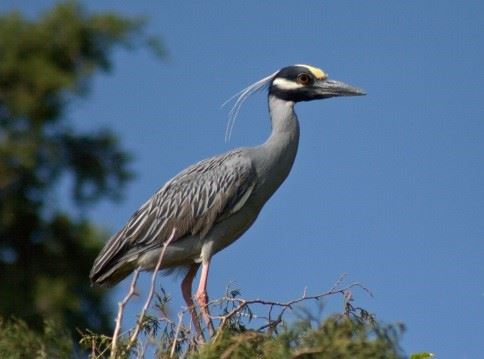| New Jersey Section of American Water Resources Association (NJ-AWRA) |
The New Jersey Section of the American Water Resources Association (NJ-AWRA) Winner for "Exceptional Water Resources Planning and Management Initiatives" |
By Rebecca Traylor, Michael Baker, Jr. Inc.
Route Project Overview
On May 24, 2012, on the eve of the Memorial Day Weekend, the Mayors of Ocean City Somers Point hosted a Grand Opening Ceremony heralding the successful completion of the new 2.2-mile-long Route 52 Causeway connecting both communities. The $400 million project replaced the existing causeway with two high-level bridges spanning the bay over two navigable channels. The new bridges offer widened travel lanes, a shared-use bicycle and pedestrian path, fishing piers and boat ramps, scenic overlooks, and walkways.
Somers Point hosted a Grand Opening Ceremony heralding the successful completion of the new 2.2-mile-long Route 52 Causeway connecting both communities. The $400 million project replaced the existing causeway with two high-level bridges spanning the bay over two navigable channels. The new bridges offer widened travel lanes, a shared-use bicycle and pedestrian path, fishing piers and boat ramps, scenic overlooks, and walkways.
The project’s location within an environmentally sensitive landscape challenged the designers to comply with numerous State and Federal environmental regulations under the jurisdiction of multiple agencies. Baker recognized the potential for significant impacts and initiated a project review to confirm the relevance, effects, and value of commitments made during the Environmental Impact Statement (EIS) process. Baker then implemented a progressive and comprehensive Environmental and Community Mitigation Strategy that streamlined coordination, strengthened consensus, and accelerated permit approval.
 The project area is vital to protected birds, fish, shellfish, sea turtles, marine mammals, plant life, and recreational and cultural interests. Major concerns for environmental impacts included wetlands and benthic habitat, views from historic architectural sites, threatened and endangered species, soil erosion, and water quality.
The project area is vital to protected birds, fish, shellfish, sea turtles, marine mammals, plant life, and recreational and cultural interests. Major concerns for environmental impacts included wetlands and benthic habitat, views from historic architectural sites, threatened and endangered species, soil erosion, and water quality.
Environmental permit conditions limited the type, location, and timing of construction activities and required significant compensatory mitigation for unavoidable impacts. Baker and the NJDOT held regular interagency meetings to keep agencies informed and demonstrate the team’s commitment to protecting resources and satisfying commitments. The project’s compensatory mitigation program included over eight acres of habitat enhancement and restoration, almost a mile of shoreline stabilization, preservation of more than 30 acres of open space, ecological monitoring, preservation of historic sites, environmental education, and millions of dollars invested in new opportunities and improved access for public recreation.
Baker’s design featured enhancement of the natural and human environment, including a continuous multiuse path between Somers Point and Ocean City. The path includes bumpouts over the water to provide fishing access and scenic overlooks. The design also called for extensive use of bulkheads, retaining walls, and buried scour protection to minimize impacts to the benthic habitat and wetlands; reuse of dredge material for beach nourishment and embankment fill; and shoreline stabilization to deter erosion of bay islands.
Uniqueness and/or Innovative Application of New or Existing Techniques.
Exceptionally challenging environmental conditions included strong currents, waves, tidal fluctuations, herbivory, and storms. These factors necessitated design modifications utilizing adaptive management strategies and forced construction to be carefully planned and closely coordinated.
fluctuations, herbivory, and storms. These factors necessitated design modifications utilizing adaptive management strategies and forced construction to be carefully planned and closely coordinated.
The relatively new design approach for shoreline stabilization had not been tested in similar settings. Therefore, Baker designed stabilization construction in two phases, with the first acting as a trial run to provide an opportunity to make adjustments during construction. Following the first phase, the team conducted studies to assess performance and made recommendations for modifications to strengthen the application. Substitutions were made where more durable materials could be used, and new construction methods were employed to strengthen the materials to withstand the extreme site conditions.
Additionally, the project called for dredging the navigation channels for the new bridges. However, disposing of dredge materials presented another challenge, since nearly all existing confined disposal facilities (CDF) in the region were already at capacity. Baker negotiated regulatory approval for an innovative plan to address disposal without compromising existing CDF capacity by hydraulically pumping it to the nearby Malibu Beach Wildlife Management Area where it was desperately needed to provide temporary relief to on-going severe beach erosion. The precedent-setting proposal was welcomed by the NJDEP Division of Fish and Wildlife and also benefited the NJDOT with significant cost savings and elimination of the need for on-site dewatering.
